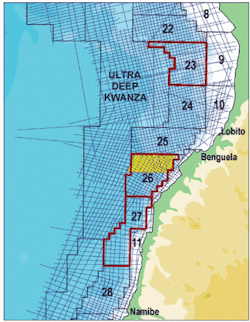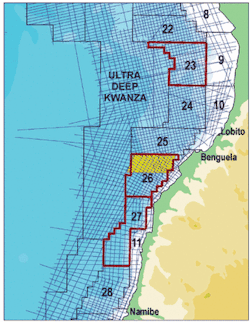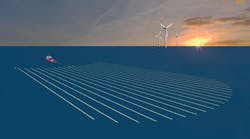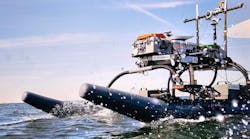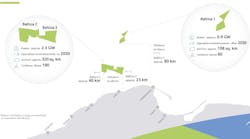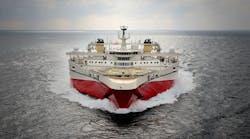What was left out of the climate debate
What has struck this geoscientist so intensely about the global climate debates and Kyoto Treaty wrangling is the lack of interest (or willful blindness) in geologic history. Very few participants have placed climate change in its proper perspective. Climate is part of the Earth's dynamic process of change. Different elemental forces are introduced, balanced, modified, and moderated in the atmosphere and oceans over very long time periods.
Environmental pundits, researchers, and politicians appear to desire static climate. It never has existed, nor will it ever exist. They also fail to recognize the historical adaptability of humanity to adjust to climate changes.
The forces released during the petroleum age have periodicity longer than a human lifespan. Since economic development (and requisite use of energy minerals) will not stop, Earth's human population will have to adapt to any climate change, regardless of source.
To provide the necessary balance and include Earth's history in the climate debate, the American Association of Petroleum Geologists produced AAPG Study #47, Geological Perspectives of Global Climate Change. This is an excellent text on global climate change through geologic time. Of importance is a diagram (page 3 of Study #47) that places global climate drivers in their relative order of importance and effectiveness over time. These are the major climate drivers by class and impact:
- First order: Solar luminosity, solar system geometry, and greenhouse atmosphere. These drivers can change temperatures by 23-28° C, and act with a 1-3 billion year periodicity.
- Second order: Global distribution of continents. Continent location can modify temperatures 14-18° C, and have an effect over a period of 2-100 million years.
- Third order: Orbital variability, solar variability, large-scale oceanographic oscillations, and long ocean tide cycles. These drivers create 9-11° C temperature changes over 10,000-300,000 year periods.
- Fourth order: Solar flares, smaller orbital cycles, short ocean tide cycles, volcanoes, weathering, regional tectonics, El Niño, La Niña oscilations, meteorite impacts, and human intervention (CO2, CH4). These shorter cycle drivers alter temperature from 1-5° C and operate over 4-100 year cycles.
In the larger scheme of forces, human climatic affects are minimal, both in scope and period. With some degree of human arrogance, the current debate has evolved by focusing on one minor driver CO2 without considering other gases.
The more important "greenhouse" gas is water vapor. Focusing on CO2 is not significant, when the apparent problem is the buildup of heat from all sources in the atmospheric system. Several graphs in the text (page 341) put global temperature in perspective. In terms of geological history and the highest order of impacts, Earth is in a relatively cool period.
Most of the hue and cry about the 0.5° C rise in Earth's temperature over the past 100 years is directed to reducing the quantity of energy minerals used - specifically, those that release CO2. The oil, coal, and uranium energy minerals presently in place are present because of geologic forces active millions of years ago.
Numerous doomsday scenarios concerning violent weather and tides arise from the models of heat added to the atmosphere. It is easy to forget that the release of heat and gases into the atmosphere assists Earth's plant life by stimulating growth and development. We should take advantage of this effect and use plant life to absorb the "excess" carbon dioxide, producing useful products for human beings to enjoy.
Wars, famine, and disease have a more immediate effect on the world's population than climate change. Fortunately, climate change happens slowly in human terms, so people have sufficient time to adapt to climate changes.
EXPLORATION
WesternGeco announced the availability of a new 3,200 sq km, multiclient 3D survey over Angola Block 26. The area shows a set of well-developed Tertiary channels and closures in a thick, structured section with high potential for maturity and post-salt source rock. "We believe that Block 26 contains a number of analogues to the discovery in Block 24, which was recently announced," said Graham Mayhew, New Ventures Team Leader for Africa. The block also contains a number of prospective tertiary channels, according to Mayhew, which have been the focus for success in the Lower Congo Basin of Angola. Block 26, together with Blocks 23 and 27, will likely be tendered before the end of the year (E-mail: [email protected]).
TECHNOLOGY
Reservoir imaging
CGG launched 4Sight, its integrated offering of 4D data processing and reservoir services, to help maximize hydrocarbon recovery at minimal cost. The aim is to convert seismic information into reservoir information: pressure and saturation changes, fluid contact movement, flow pathway mapping, and undrained compartments. This will be done using surface-consistent matching, 4D stratigraphic inversion, 4D AVO, 4D depth imaging, and 4D multi-component tools. Potential applications range from detection of unswept zones, to improved reservoir characterization, and optimized recovery strategy (Email: [email protected]).
Integrated decision-making
GeoQuest (Schlumberger) released the Merak 2001 Value Management software suite. This release consists of Peeptrademark software, for economic evaluation and decline analysis; Capital Planningtrademark, for decision support and portfolio management; VOLTStrademark, a reserves tracking and reporting system; and Decision Treetrademark, for management and analysis. Understanding risk, optimizing development, predicting value and evaluating options are growing client challenges as the pace of the industry accelerates. This version of Decision Tree provides Microsoft Excel as a calculation engine in addition to Peep, within the Visual Monte Carlo (VMC) module. This is an improvement for users working with the scriptable calculation engine to solve custom problems. Additionally, Peep's VMC and Monte Carlo modules now allow the tracking of probabilistic time series, such as cash flow or production (Email: [email protected]).
